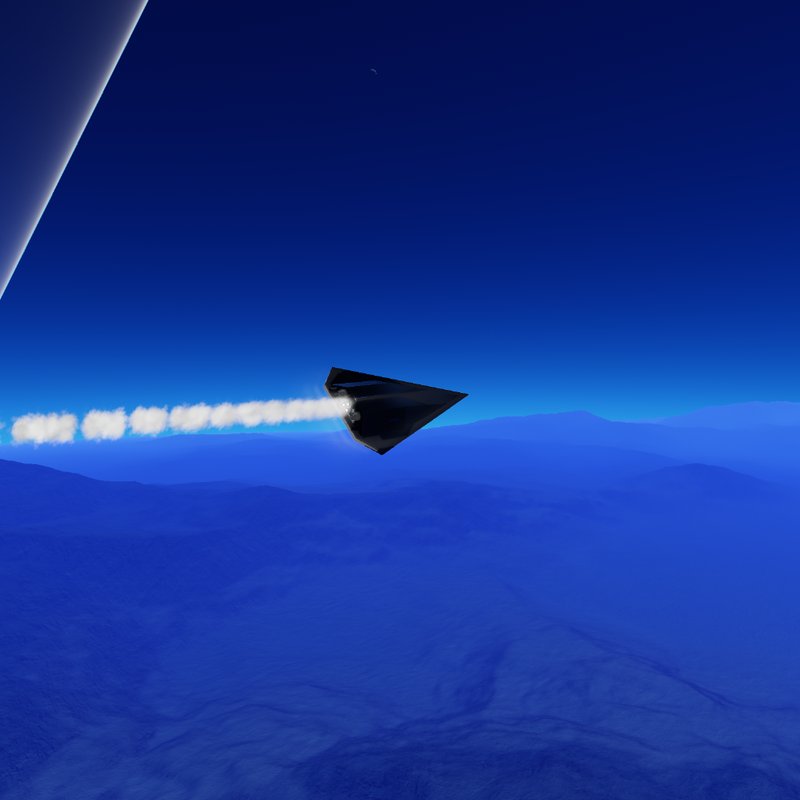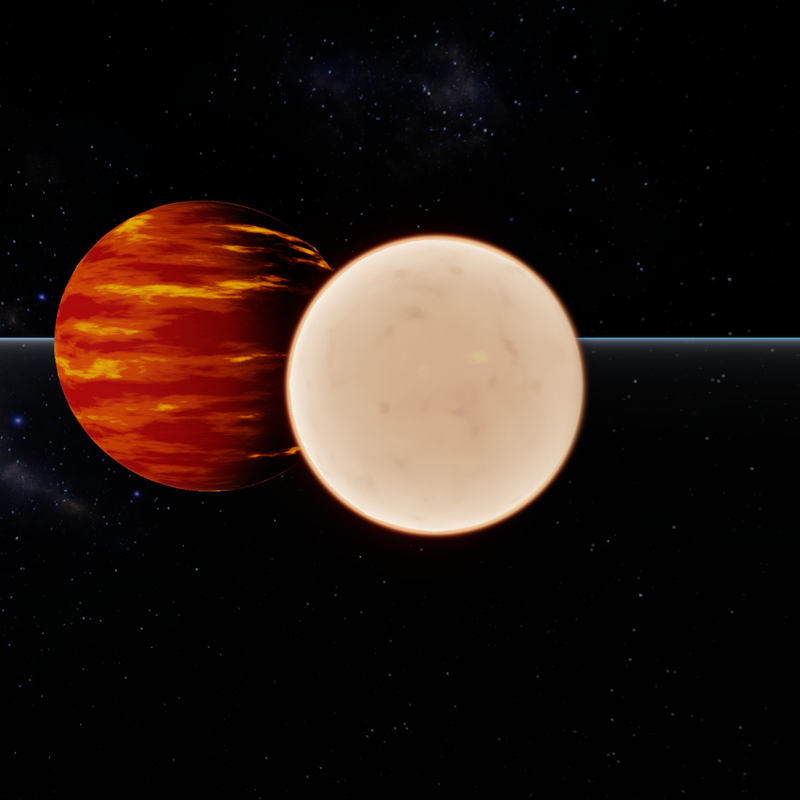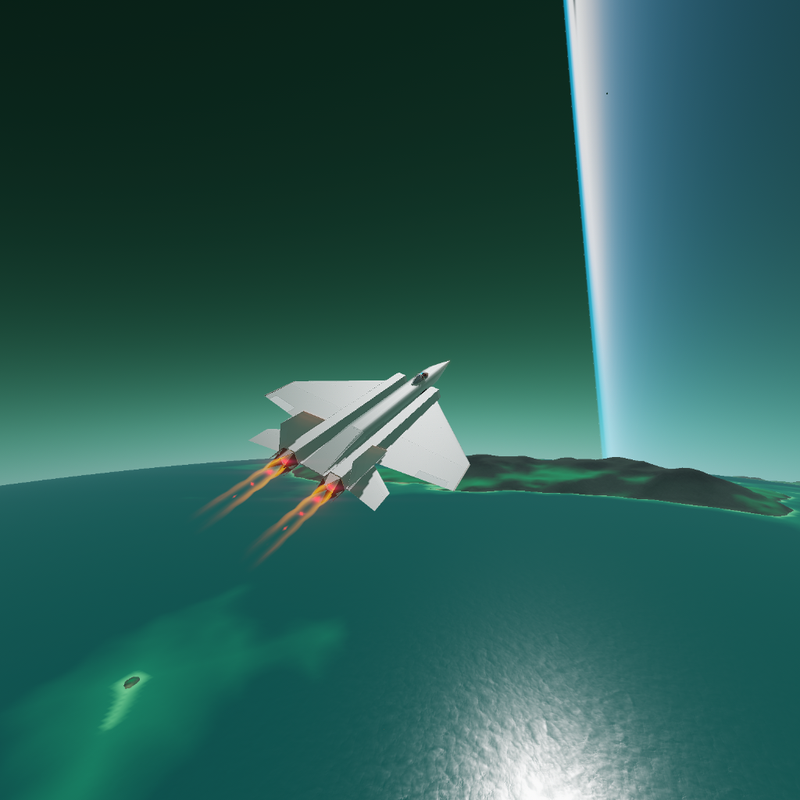"You've waited two and a half years for this... over a hundred celestial bodies of questionable quality stuffed into one big package. Saying 'it's been a while" feels a bit weird, so screw it, but we're already here, we might as well get on with it."
ZG2 is finally here. A total of 123 celestial bodies, divided between 20 systems. My biggest, best, craziest, and most resource-intensive creation in the game, most likely ever. Sure, others have done similar stuff before. Many of them with higher and more consistent quality. But who cares? I make this purely for my own enjoyment, and just happen to share it to thousands of strangers and bots on the internet because of two words: why not?
UPDATE LOG
There's obviously a lot to go over. In fact, I won't be doing the usual "additions, planet changes, misc changes" format for this, instead I'll be going on a per-system basis, from inwards to outwards, and addressing everything that way, though there will still be a section for miscellaneous changes.
For extra information, please check celestial body descriptions (either in PS or on the site). Many of them I have comments on which contain extra lore, background and development information, and/or some dumb joke relating to the celestial body (site only, of course).
Galaxy Center

- updated visuals, now has a bluish glow but overall tries to mimic the appearance of a simple black hole
- a grossly oversized planetary ring simulates the galaxy's "disc", and it is bright enough to be seen during both night- and daytime on celestial bodies.
- does work with in-game solar panels if you're close enough, but it's really not reccommended doing so, it's better to simply take an OP craft (or just enable infinite fuel) and not worry about battery usage.
- altered the gravity so that the systems will mostly remain in one place (the orbital periods are in the hundreds of thousands of years to millions of years range — compare that to real life, the solar system takes 230ish million years to complete one orbit around the Milky Way's center, however it should be noted that SDG-1 (aka the in-universe, not-restricted-by-game-limitations version of Zenith Galaxy) has about one-fifth the size of the Milky Way)
Cythare

Hot blue star in the inner areas of the galaxy. Its only planet is Genesis, a cold brown and blue gas giant with a number of weird moons.
- temporarily removed Klagro due to unrealism, will return in a later version in a new star system though
- Genesis: expanded description and lore, little to no visual changes
- Gestara: reduced gravity and altered terrain
- Kakhroda: overhauled ravines, added mountains, mildly adjusted atmosphere
- added Schmelesch: ancient volcanic moon in a far-out orbit with its own submoon
- added Quaradon: the submoon of Schmelesch, a dusty rock with occasional rough terrain peeking out
Tethlanov's Stars

A pair of two white dwarf stars in funky orbits with one captured planet.
- Tethlanov A & B: minor visual changes, greatly increased gravity
- Tethlanov AB b: completely overhauled visuals, increased heat, renamed to a more realistic designation
Lafaran (NEW)

An orange star that has three planets, and contains lore about the Xantalicans, a now-extinct alien species that overused a strange substance to the point of catastrophic failure. (not an analogy to fossil fuels, just coincidentally ended up similar)
- Netrex: hot Mercury-like planet with lava flow terrain and lots of volcanoes
- Jantanis: original home planet of the Xantalicans, now a barren wasteland in shades of purple and blue, but the remains of their civilization can still be found scattered across the surface (these are: south pole observation tower, space centre, refinery, laboratory complex, bridge, religious monument) – originally suggested by user chillymations
- Kayub: artificial moon of Jantanis, large cube of unknown purpose that is covered in dust – originally suggested by user CoralpolisInterstellar
- Saganor: large planet with a global ocean of liquid nitrogen – originally suggested by user Aviator01
- Flegan: rocky and dusty moon with canyons, and a large basin where remains of a Xantalican religious monument can be found
GENO 2322

Brown dwarf with one planet.
- GENO 2322: overhauled appearance to be slightly more realistic
- GENO 2322 b: revamped terrain
Pholis

Red dwarf star with some significance to the main lore, has three planets.
- Aurunia: minor visual changes
- Taibon: revamp with new terrain and colors, also added an N onto the end of the name for easier pronounciation
- Phaedra: added large amounts of lore including a location guide, reworked some parts of terrain, added clouds
- Ectodosia: overhauled terrain and reduced gravity to make it more realistic
- Lamiko: minor terrain changes, reduced gravity to make it more realistic
Alpha Nevonum (NEW)

A chaotic quad-star system with each star being different from the rest. Home to some of the most ridicilously-named celestial bodies, and also has some lore significance.
- Alpha Nevonum A (Nevonaria): WR star, very hot
- Alpha Nevonum A b: hot and deformed gas giant, also very hot
- Alpha Nevonum B (Aruhina): white main-seauence star, has one planet
- Naibol: a habitable island world obscured by blue fog
- Cycindahna: small rock with a glowing yellow area that faces Naibol
- Trithyiann: small brown spiky rock, Naibolean moon
- Stolunek: the only major moon of Naibol, volcanic with rough terrain and some cracks
- Alpha Nevonum C (Vizdran): red dwarf with one planet
- Alpha Nevonum C b: hot gas giant
- Alpha Nevonum D (Ritanara): white dwarf
Vasa X (VS10)

Large orange star with two planets and several moons
- Vasa X: updated gravity and colors
- Vasa Xb (Ogradius): modified terrain and expanded lore, renamed from placeholder name Domesticus
- Vasa Xb I (Vanto): made terrain more unique, increased gravity, renamed from Erebus
- Vasa Xb II (Vantiko): minor visual changes
- Vasa Xc (Famaran): atmosphere changes and minor visual changes, renamed from placeholder name Furai
- Vasa Xc I (Aetheris): minor terrain changes, increased atmosphere density, greatly expanded lore
- Vasa Xc II (Garander): smoothened colors, added rings, renamed from Girgadul
- Vasa Xc II-I (Hatris): minor color changes, added craters, modified designation to be more realisic (using a / to realistically designate it as a submoon causes issues with the file, so a dash was used in its place instead)
- Vasa Xc III (Uferanos): improved terrain, renamed from Uviros
- Vasa Xc IV (Ferenza): made terrain slightly more realistic, renamed from placeholder name Fruza
Alpha Ceti (Citrini)

A weird star that emits yellow light. No relation to the real-life star of the same name.
- all celestial bodies have been given a more realistic designation, however this also broke the launch spots; the system will be fully renamed to Citrini in a later version, where i may attempt to remake the launch site and its spawn spots
- Alpha Ceti: recolored, increased gravity, expanded lore
- Alpha Ceti b: recolored clouds and terrain from teal to a salmon-red color, expanded lore, increased heat, gravity, and atmosphere height
- Alpha Ceti c: decreased size and gravity, made mountains more prominent, slightly expanded lore
- added Alpha Ceti c I: dark rocky moon with cracks and craters, contrasted by a bright blue ring
- Alpha Ceti d: altered ring design, revamped clouds, slightly increased gravity
- Alpha Ceti d I: overhauled terrain and atmosphere, now has a reddish color instead of being a full-on Titan clone, also decreased size and gravity
- added Alpha Ceti d II: large and dense asteroid moon with higher than usual gravity and thus deeper craters, alongside some large boulders
Stura (NEW)

Bright red star with two gas giants and lots of funky moons.
- Pahorm: red hot gas giant with a surprising amount of moons; visually an attempt to replicate (read: is a copycat of) Fliese 13Ab by user Danny4205/SergejGrauberger
- Akrem: closely-orbiting asteroid moon with a part of it glowing from heat
- Rensonia: venusian moon with volcanoes and ancient terrain
- Maronat: small, rocky, maroon colored moon with minor lava lakes
- Tranardum: hot asteroid moon
- Garumse: cold, dark blue gas giant with a layer of clouds near its equator missing
- Durandal: icy and rocky moon with cracks and volcanoes – originally a submission for a planet making challenge by user rockethelper
- Kefrens: cold desert moon with unique terrain
Sirodis (SD 1592)

The "flagship" star system of Zenith Galaxy, featuring some of the best celestial bodies in the entire thing.
- Sirodis: changed from a white-blue star to an orange dwarf for realism, which also means reduced size and temperature, also greatly expanded lore
- Utopia: improved various aspects of terrain, added a simple road network next to the launch site (features: two diverging paths — one with one of those awesome orange-lit tunnels that make sports cars sound great, the other is a mountain road —, a plains village where said diverge happens, a village in a basin surrounded by mountains, an elevated spiral/loop road right after the tunnel alongside a scenic lake and parking lot, and one fairly basic city), greatly expanded lore, added clouds, removed mountain base
- Chasmata: slightly improved visuals, slightly increased atmosphere density and height, expanded lore
- Enduro: added depth to terrain cracks, slightly increased size, expanded lore
- Osiris: greatly increased clouds detail, slightly increased size and slightly decreased gravity, adjusted rings
- added Vermos: small icy and rocky asteroid within the ring gap of Osiris, with stunning views – originally fanmade celestial body by user MatTheAerospacer
- Codrisa: revamped terrain and changed colors, slightly decreased size, decreased atmosphere density, added resort base and clouds
- Insomnia: added craters and volcanoes, decreased gravity, slightly expanded lore
- Viratis: revamped terrain, slightly decreased size and gravity, slightly increased atmosphere density
- added Sensera: a basic icy moon, some of its craters have water in them
- Hareon: made terrain slightly flatter, slightly changed colors, minor changes to atmosphere, expanded lore
- Sparia: complete overhaul with new terrain and colors, added a large crater that looks really cool
- added Daimethros: a fairly ordinary moon with a low amount of craters and terrain of varying roughness based on terrain color darkness
- added SRD1626 "Rulan": comet with a tail
Mortan (limited import)
A basic implementation of my Mortan system. It is canonically located within the SDG-1 galaxy but only a simplified rendition of it is featured in order to reduce lag.
- updated celestial bodies to Mortan's 1.5.1 (Flareout) version
REAS-21S (NEW)

A white star with one planet and one moon.
- REAS-21S1: habitable ocean planet with a teal color scheme resembling that of Kepler-22b
- REAS-21S1-1: pale red colored, formerly volcanic moon in a fairly far-out orbit
Kalima

A binary star system with a high resemblance to the main Alpha Centauri pair.
- designations are now realistic
- Kalima A & B: made colors more realistic
- Kalima Ab: reworked color and cloud design, increased ring distance
- added Kalima Ab I: hot rocky moon with lava lakes and cracks
Callun Konta
(picture accidentally got deleted)
A bright and active red dwarf star with two planets.
- Callun Konta: increased gravity, slightly decreased heat
- Callun Konta b: made terrain colors more realistic, slightly increased temperature, slightly expanded lore
- Callun Konta b I (Orodia): increased size, decreased gravity, adjusted terrain
- fixed and implemented Callun Konta c: a small ice planet with parts of its surface constantly breaking due to tidal forces, with a melting surface creating rivers of water
Etaros (NEW)

A large orange star with some funky planets.
- Secha: a large and fairly hot planet with a green and yellow surface
- Vakto: rocky and mountainous planet with a few lakes scattered around
- Yardes: a large, dusty, cream-colored planet with a large amount of craters and poor visibility on the surface
- Vallum: the moon of Yardes, a dark rocky and icy world with an even crazier number of craters
- Thelmar: large red and green gas giant with no moons
Purasaro

A slowly rotating pulsar. (it can't rotate any faster due to game limitations)
- improved appearance
- increased size and heat, greatly increased gravity
Caordu-Caulit (NEW)

A weird binary system with a red dwarf and a downsized carbon star.
- Caordu: red dwarf star, uses an oversized planetary ring to simulate an asteroid belt of sorts
- Caordu b: a semi-habitable frozen world with primitive plant life
- Caordu c: small rocky and icy planet with dark valleys and canyons
- Caordu e: generic Jupiter-like gas giant
- Caordu e I: basic icy moon with great views
- Caordu e II: basic rocky moon with occasional lowlands
- Caordu d: cold and dark gas giant with one moon
- Caordu d I: greenish rocky moon with a toxic foggy atmosphere that piles up into lowland areas
- Caulit: an oddly small carbon star
Astoria (NEW)

A unique star with two planets and amber-colored light that evokes a nostalgic ambience (works best with Old Photo or Old Video tonemapping setting).
- Astoria I: eyeball planet with water between a hot rocky desert and an icy dark side, semi-habitable but has no life
- Astoria II: a detailed habitable world with a mix of mountainous terrain and flatter areas, with a few launch sites and a number of interesting landmarks
- Astoria II-I: a gray rocky moon very similar to our own, but with visible past volcanoes and more evenly distributed maria
URADS-42 (NEW)

A G-type star with three planets, uniquely located "above" (relatively speaking, of course) the other systems.
- URADS-42B: large, tidally locked venusian planet
- URADS-42C: smaller hot rocky world with lots of small lava lakes scattered around
- URADS-42D: ocean planet with sandy islands
Henaor

The outermost system in ZG, an orange dwarf with two planets that both begin with the letter T.
- Tarnuvia: slightly altered terrain, slightly expanded lore (still couldn't get rid of that weird cloud line at the equator though :/)
- Prentra: reduced gravity and made terrain slightly less intense
- Taonga: reworked clouds and added poles, decreased temperature
- Mersenario: overhauled terrain, greatly expanded lore, decreased gravity and increased atmosphere density
- Haltemro: altered terrain, slightly expanded lore
MISCELLANEOUS STUFF
- added version tag ("zenithgalaxy") to all celestial bodies
- increased star system SMA's in order to spread them out and in order to fit them in better
- as already mentioned, made designations of most non-named celestial bodies more realistic, though in some instances things like game limitations prevented me from using the proper designation
- revamped all stars, using the atmosphere fog shader to create a "glow" of sorts, it's not perfect but it works fine enough, original appearances are still kept underneath
- modified liquid parameters for celestial bodies that have them
- added clouds to Utopia, Codrisa, and Phaedra
It's been two and a half years since Zenith Galaxy has been updated. I hope y'all enjoy fooling around with it as much as I suffered with upgrding and modifying it. Let me know if anything's off (I'm aware of a few typos in some descriptions), I have plans for a version 2.0.1 which might come out during my winter break but that's only a possibility.
-ZSX

@PZLAgencies the link to it kind of just disappeared, no idea why, but i got rid of it and replaced it with a note for the time being